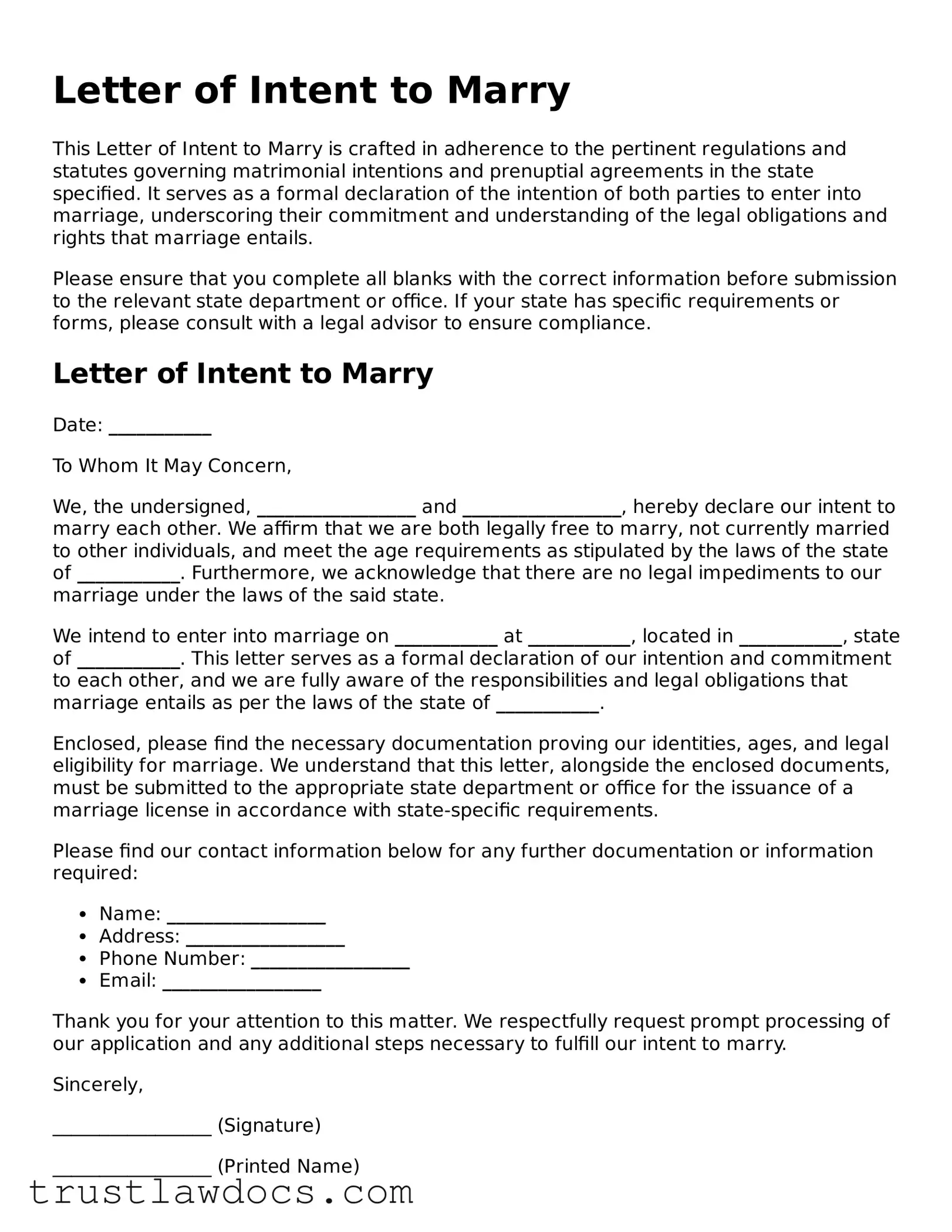Letter of Intent to Marry
This Letter of Intent to Marry is crafted in adherence to the pertinent regulations and statutes governing matrimonial intentions and prenuptial agreements in the state specified. It serves as a formal declaration of the intention of both parties to enter into marriage, underscoring their commitment and understanding of the legal obligations and rights that marriage entails.
Please ensure that you complete all blanks with the correct information before submission to the relevant state department or office. If your state has specific requirements or forms, please consult with a legal advisor to ensure compliance.
Letter of Intent to Marry
Date: ___________
To Whom It May Concern,
We, the undersigned, _________________ and _________________, hereby declare our intent to marry each other. We affirm that we are both legally free to marry, not currently married to other individuals, and meet the age requirements as stipulated by the laws of the state of ___________. Furthermore, we acknowledge that there are no legal impediments to our marriage under the laws of the said state.
We intend to enter into marriage on ___________ at ___________, located in ___________, state of ___________. This letter serves as a formal declaration of our intention and commitment to each other, and we are fully aware of the responsibilities and legal obligations that marriage entails as per the laws of the state of ___________.
Enclosed, please find the necessary documentation proving our identities, ages, and legal eligibility for marriage. We understand that this letter, alongside the enclosed documents, must be submitted to the appropriate state department or office for the issuance of a marriage license in accordance with state-specific requirements.
Please find our contact information below for any further documentation or information required:
- Name: _________________
- Address: _________________
- Phone Number: _________________
- Email: _________________
Thank you for your attention to this matter. We respectfully request prompt processing of our application and any additional steps necessary to fulfill our intent to marry.
Sincerely,
_________________ (Signature)
_________________ (Printed Name)
_________________ (Signature)
_________________ (Printed Name)
